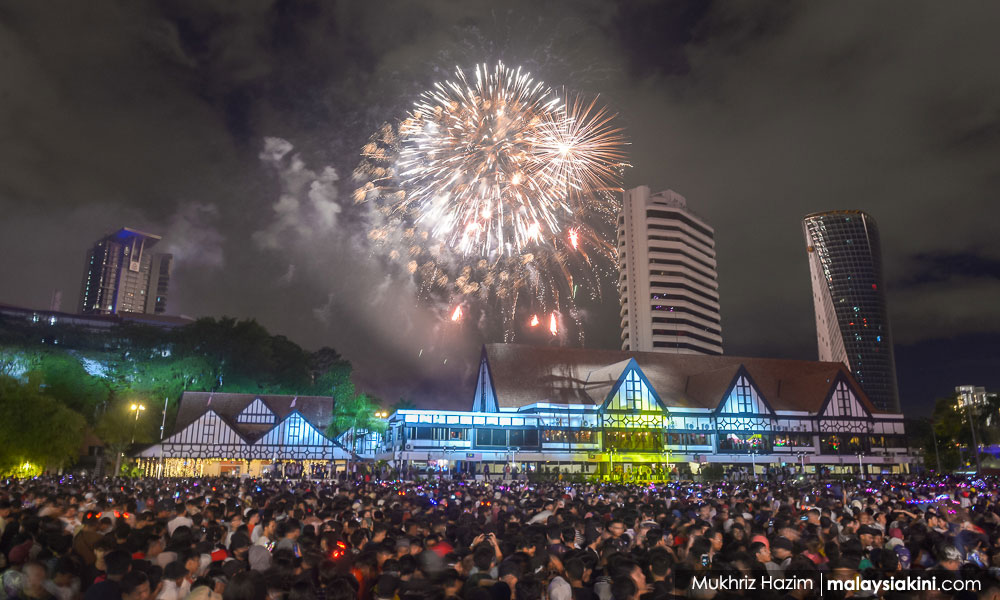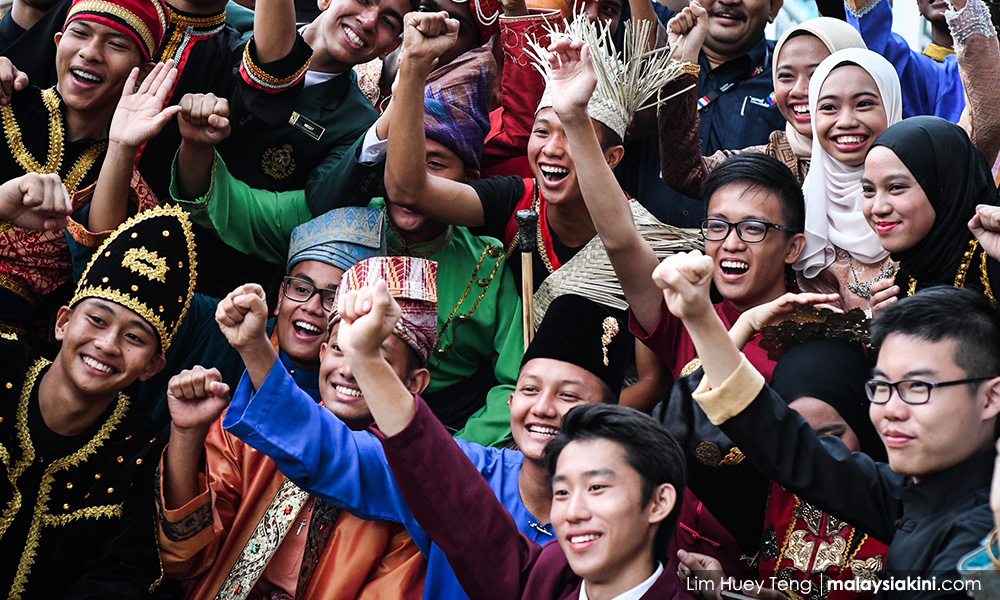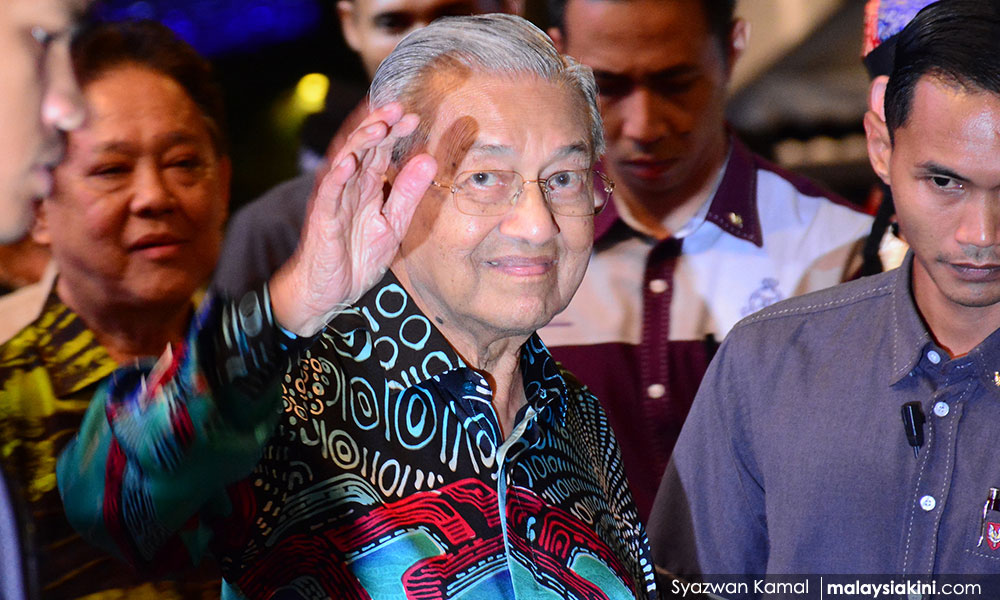BOOK REVIEW | Azly Rahman, born in Singapore and brought up in Johor Bharu, has seen Malaysia since early post-independence days to the present. Azly has also experienced the Malaysian education system, both as a student and lecturer. He can relate those experiences to the time he has spent as both a learner and educator with a number of other education systems around the world.
Being a thinker and writer over a number of years on Malaysian society, education, and politics, Azly is in a unique position to reflect upon Malaysia today, once again clearly under the influence of Mahathirism, and once again within an education tragedy unfolding. This is not my opinion alone, academician and intellectual activist Sharifah Munirah Alatas recently mentioned Azly in one of her online columns as a Malaysian academician who should be listened to much more.
In his eighth book on Malaysia in a globalising world, Azly has put together a series of focused musings guided by an ingrained moral and philosophical conscience about what is now sadly happening in contemporary education, society and politics within Malaysia. A national mental derangement, as Azly puts it, is suppressing the country’s ability to move forward and take its place in the world. Malaysia’s ingrained racism, religious narrowmindedness, neo-feudalism and institutionalised cronyism is inhibiting the country’s ability to place itself on the global arena where it matters today.
Throughout the book, Azly has woven international issues with what is happening inside Malaysia, making this collection of vital importance to every Malaysian concerned with the fate of the nation. The Pakatan Harapan’s actions on human rights, education, justice, equity and inactions on diverse issues like institutionalised apartheid and global warming are preventing the nation to grow in a balanced and sustainable way with the virtues of truth, justice, equality and equal opportunity that were promised before GE14.

We can sense these disappointments in the passion of Azly’s writing. The great betrayal is that Pakatan Rakyat sought office on the narratives of reform and spun hope with the rakyat for change, only to revert to the old racist and Salafi-Wahabi tendencies that preserved BN rule for the last generation. This is why Azly’s work is titled ‘high hopes, shattered dreams’, as the central focus of this analysis is grand betrayal.
The continuation of the quota system for matriculation and the failure to ratify the International Convention on the Elimination of All Forms of Racial Discrimination (Icerd) were some of the first indications of the emergence of Ketuanan Melayu 2.0, an ideology that will continue to ensure blindness to envisioning a multicultural Malaysia.
Azly begins his collection of essays with a stark warning that Malaysia is not immune from urban terror attacks due to the rampant freedom that extremist preachers are given to roam freely to extol their poison to the community. He then presents 43 essays.
Part One, entitled the "Dilemma of Critical Consciousness", focuses on contemporary issues that are skewing Malaysia away from being a sustainable state where the rakyat is supposed to evolve into critical, creative, ethical and futuristic citizens. I will touch on just some of his messages that I found profoundly important. Azly commences part one with an allusion to Plato’s cave, the metaphor of the psychic prison. Through this lens, Azly argues that Malay feudalism is a social construct borne out of historical accident.
This has been turned into a source of power by the elite to control the rakyat. Race, religion and class continue to be used by today’s leaders to divide and conquer, just as the British once did in colonial times. This is the nature of neo-colonialism in post-colonial Malaya if one sees the development of ideology from the perspective of a continuation of the logic of late colonialism in an Asian despotic state.

In his essay "Musings on a nation gone mad", Azly challenges Malays to question authority, albeit intellectually. Royal myth and repressive twists to Islam perpetuated by the power elite are suppressing clear perceptions of the reality of truly free Malaysia. This is going to be a battle of perception and cognition to create a metamorphosis that may truly free the Malay psyche. Revolutions and the institutionalisation of meaningful change, he believes, can only be effective if there is a sustainable transformation of the consciousness.
This hypocrisy of using religion as controlling ideology is what Azly points out; a country ruled by Muslim monarchs where Ketuanan Melayu is a licence to rape and plunder nature and to subjugate the mind of the powerless.
Religion, feudalism and a narrow view of the world have caused the rakyat to live under a veil of authoritarianism. Malays have been misrepresented as buffoons, Ali Babas, gangsters and chronically dependent on handouts by the ruling class to keep them subservient. The leaders show Malay chauvinism while the Malay youths are caught up with drugs and girls become single mothers.
Azly is calling for this moment in history to restore Malay dignity and to recapture the Malaysian identity. Hegemony is the hidden enemy that needs to be unmasked, psychologically. In "Long live the Rome statute! Long live idiocy?" Azly shows his disappointment along with the rakyat who put Harapan in power. Everyone has been sold out. His frustration on the failure of Malaysians to see the importance of the internationally-agreed-upon statute could be read in his tone. Why are there still many of the leaders ignorant of the universal values and proposal for implementation? That was Azly’s anguish on the intellectual poverty of those who failed to understand a simple logic of human rights.
Reformasi cannot happen within a bumiputera agenda and the hopes of a truly Malaysian agenda are fading. Azly asks, where is the difference between the old and the new regime? The ideas and actions of the new regime are exactly the same bankrupt concepts. Azly talks of reform that isn’t on any political platform. That is the reform of the skewed Malaysian institutionalised reality and the recreation of an egalitarian common truth for all. This requires creating a culture of critical consciousness which can challenge and eventually dissolve all the myths perpetuated by the psychic prisons of intolerance, racism, criminalising of criticism and an institutionalised version of the truth to suit the needs of the elite to cling on to power.

Azly offers a solution. That solution is to restore the truth of a common heritage that the nation is made up of descendants of immigrants, share that memory and move on in diversity. His stand is simple: embrace multiculturalism to the fullest until the essence of humanity and empathy is illuminated. We cannot settle for less in a country that offers the challenges and opportunities of a vibrant concept of nationhood.
The essential question is now how to build a "Malaysian Malaysia"? A Bangsa Malaysia which requires a common history and common destiny, drawing from the strength of diversity. Indonesians had a rebirth from the Sukarno era. Malaysians need to do the same. Malaysia needs to move to the next level where people do not think of themselves along strict communal lines; not ethnocentrically as Malays, Indians or Chinese but as Malaysians with a pride in their unique personal history.
Under Harapan, there is no pursuit of a "Malaysian Malaysia". There seems to be no interest to forge that much-needed version of nationhood. There is no political will. It is still about profiting from divisive politics and to ensure that society is reproduced that way through schooling. And therefore, we still have politicians eyeing for the top post speaking with so much confusion of what it means to be Malaysian. The biggest crisis in Malaysia is the crisis of identity and it’s been partially manufactured. This hegemony comes from the education system.
In Part Two, "The Construction of Educational Confusion", Azly looks closely at the education system. His arguments in all of the essays point to one proposal - that there is no soul nor holism, nor a clear framework guiding changes expected out of the new regime. There is only rebranding of projects. There is no exciting innovation that collectively would usher in the much-needed educational system into newer frontiers, breaking new grounds in the design of a "new Malaysia" in a globalised world in need of a new understanding and implementation of a new citizenry. His fear is the ever-creeping radical Islamism and the expression of Arabism as Malay culture.

Azly takes up the sources of one-dimensionality within the education system. Institutionalised discrimination through quotas, showtime paradigms like flying cars that have no substance except syok sendiri, inciteful preachers being allowed to pollute the minds of the country’s youth and using schools as medan dakwah to destroy the pride of Malay culture which, through Arabism, has colonised the Malay mind. Indeed, Arabism has been pushed as a substitute for intellectual and spiritual enlightenment, all at the cost of critical thinking, creativity and moral reasoning. The system needs urgent reform.
Azly talks of returning to the year zero in a new education revolution. This revolution must topple the straightjacket of the institutionalised apartheid system which clings onto the idea that only Malay-bumiputera have special rights. This false sense of superiority is a Malaysian tragedy, holding back both the individual’s potential and the potential of the nation as a whole.
No longer should the education system be allowed to produce the lowest common denominator good and obedient worker for an industrial system making the elite richer. It should be replaced with one that promotes a critical consciousness, dignity, self-respect and independence.
Azly’s vision of Malayism is not Arabism. His vision is about a renaissance of a recreated contemporary "Nusantarian" culture, where Malays perform sembahyang and not solat.
There are three essays making up Part Three. In the first essay, the "Third Force After Mahathirism" is perhaps the centrepiece of the whole book. There is an air of respect for Mahathir by Azly who sees under the Machiavellian armour a person who wants the same aspirations for Malaysia as himself.
However, there is a paradox here. Mahathir’s pre-occupation with liberating the mind of Malays from the shackles of neo-colonialist domination has led to a guided kleptocracy ruled by one man. In the inner workings of Harapan, this has been a new Malaysian political dilemma. One man wants to still govern in his own way, creating inner confusion.

Mahathirism is an ideology in itself, a product of the 80s, based upon institutions which are repressive. This political mantra is now bankrupt. Even if it not entirely so, it has mutated in newer forms. Malaysia’s hope for a healthy and transformative democracy is stunted, bonsai-ed by the legacy of one-man authoritarianism. Herein lies the hope for change and the ruptures that are happening in the new coalition. Azly argues that a "trishakti" third force is required to restore Malaysia from the malaise it is in. For this a new leader is important, and this new leader has to be found.
In this book, Azly reveals himself to us. He goes back to the peace of his early village life. He is an intellectual, a scholar in the classic literature of freedom from repression, a patriot of a "new Malaysia", a reformist (if not a romanticist) when it comes to returning to core Malay values, a believer in an inclusive Malaysia and not an exclusive Ketuanan Melayu arrogance.
Perhaps Azly’s guiding principle is the quotation he took from Tunku Abdul Rahman’s 1957 Merdeka speech, "…but while we think of the past, we look forward in faith and hope to the future; from henceforth we are masters of our own destiny, and the welfare of this beloved land is our own responsibility".
From High Hopes to Shattered Dreams: The second Mahathirist revolution a year later can be purchased here.
MURRAY HUNTER has been involved in Asia-Pacific business for the last 30 years as an entrepreneur, consultant, academician, and researcher. He was an associate professor at the Universiti Malaysia Perlis and also a visiting professor at a number of universities and a regular speaker at conferences and workshops in the region.
The views expressed here are those of the author/contributor and do not necessarily represent the views of Malaysiakini.

